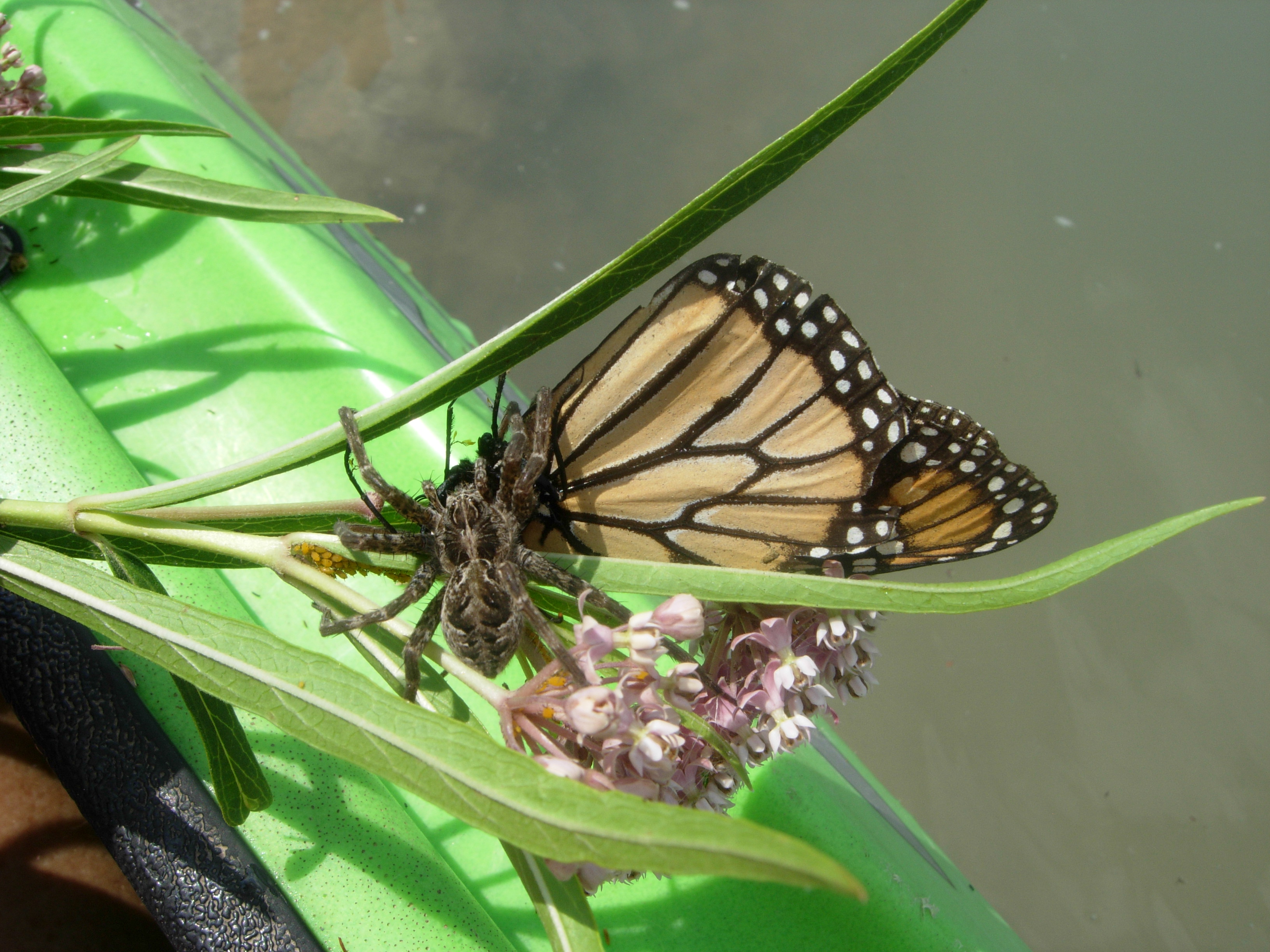It was a “pollinator-palooza” this weekend at the ranch, as Monarch butterflies, Queens, Swallowtails, gorgeous red wasps and exotic blue bumblebees competed for nectar on robust Swamp Milkweed stands. The aphids did their best to suck the life out of the party, but our team of Monarch taggers nabbed 32 in just a few hours. Oddly, only seven were females.
The abundance of insects made for an irresistible buffet for predators. Praying mantises, spiders, and birds took their toll on our migrants and their mimics, with Monarch and Queen butterfly detritus littering the Llano River and the banks. The cruelty of Nature makes for a dangerous world for butterflies–which makes Monarch butterflies’ miraculous 3,000-mile migration to Michoacan, Mexico all the more remarkable.

Orb weaver spider feasts on Monarch butterfly
In his book, The Dangerous World of Butterflies: the Startling Subculture of Criminals, Collectors and Conservationsists, award-winning journalist Peter Laufer, Ph.D., explores butterflies’ historically central role in nature, mythology, spirituality and art and how human beings are making the creatures’ existence more challenging.
While he doesn’t delve too much into the perils that natural predators pose to butterflies, his comprehensive investigation of what people are doing to make things tougher for lepidoptera is compelling. Laufer’s chapter on accompanying a U.S. Fish and Wildlife Special Agent who’s been assigned to track and arrest the world’s most wanted butterfly smuggler is a page turner.
Who knew that butterfly smuggling was a rampant black market trade that carries prison sentences of five years and fines of $250,000? It’s true. Sneaking endangered specimens into the U.S. for sale to collectors and museums can result in big money for those willing to take the risk. Sadly, an entire economy has evolved around the breeding, capturing and smuggling of very rare and endangered butterflies all over the world. Until I read Laufer’s book, I had no idea of the magnitude of this problem.
Laufer also offers one of the best descriptions of the process of metapmorphosis I have ever read, describing it as “the ultimate butterfly magic.” With the help of biologist Rachel Diaz-Bastin in San Francisco, he strikes the appropriate balance of awe and acceptance as Diaz-Bastin fills in the scientific blanks.
“All of their body parts, every cell, liquefies…This is weird stuff. All of their cells differentiate and begin forming the adult butterfly,” she says. “It’s basically this big butterfly soup inside….It is amazing.”
Agreed. No wonder we’re so fascinated with butterflies.



Leave A Comment